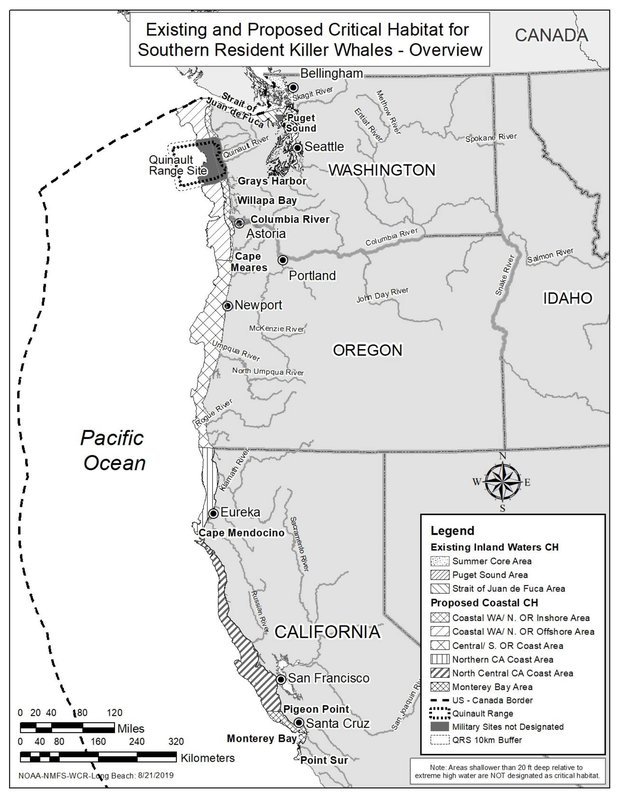For Immediate Release, December 16, 2020
|
Contact: |
Miyoko Sakashita, (510) 844-7108, miyoko@biologicaldiversity.org |
Lawsuit Launched Over Stalled Habitat Protection for Endangered West Coast Orcas
Final Rule Designating 15,000 Square Miles of Critical Habitat Overdue
SEATTLE— The Center for Biological Diversity filed a notice of intent to sue the federal government today for its failure to finalize expanded habitat protections for critically endangered Southern Resident killer whales, whose population has dipped to just 74 orcas.
The National Marine Fisheries Service proposed designating 15,627 square miles of new critical habitat in September 2019. The rule would expand current protections in Washington’s Salish Sea south along the coasts of Washington, Oregon and California to Point Sur.
The proposed rule followed an April 2019 court-ordered agreement after the Center sued the Trump administration in 2018 for failing to issue habitat protections required by the Endangered Species Act. The Act requires agencies to finalize proposed rules within one year. Today’s notice letter gives the Fisheries Service 60 days to comply.
“These critically endangered orcas can’t keep waiting for the habitat protection they deserve,” said Miyoko Sakashita, oceans program director at the Center. “These extraordinary animals have already waited too long for us to protect them and their prey from pollution, harassment and habitat degradation. Humans put Southern Residents on the path to extinction and we need to start undoing that damage, including restoring the native salmon runs they need to survive.”
The expanded critical habitat proposal covers important foraging areas, river mouths and migratory pathways along the Pacific Coast from the Canadian border to Big Sur, California. Added to the current habitat protections in Washington’s Salish Sea, the total designation would be more than 18,000 square miles of marine habitat.
While these orcas spend their summers in Puget Sound and the Salish Sea (areas protected as critical habitat in 2006), they travel extensively along the West Coast during the winter and early spring, congregating near coastal rivers to rest and feed on migrating salmon.
The Center petitioned in 2014 to better protect areas off the coasts of Washington, Oregon and California (see map). The Endangered Species Act prohibits federal agencies from authorizing activities that will destroy or harm a listed species' critical habitat. Animals with federally protected critical habitat are more than twice as likely to be recovering as species without it, a Center study found.
The final rule could help protect orcas from military testing and training activities that were recently approved off the West Coast. The Center has other pending lawsuits against the administration to protect Southern Residents. A lawsuit filed last year seeks updated analysis of how salmon fishing is harming the orcas. One launched last summer seeks an analysis of noise pollution, contaminants, and disturbance in orcas’ Salish Sea habitat from dredging Seattle Harbor to allow larger container ships.

The Center for Biological Diversity is a national, nonprofit conservation organization with more than 1.7 million members and online activists dedicated to the protection of endangered species and wild places.

